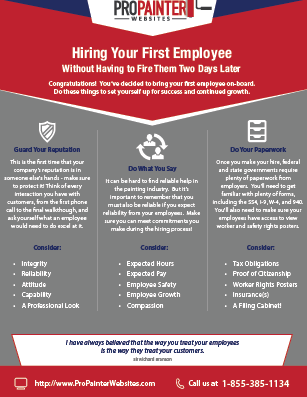Discover The Methods Which Seasonal Elements Can Affect The Success Of Industrial Exterior Paint And Figure Out The Very Best Times To Accomplish Long-Term Results For Your Task
Discover The Methods Which Seasonal Elements Can Affect The Success Of Industrial Exterior Paint And Figure Out The Very Best Times To Accomplish Long-Term Results For Your Task
Blog Article
Web Content Produce By-Regan Whalen
When you're planning a commercial exterior paint job, seasonal elements can make or break your outcomes. You'll intend to consider just how temperature level and humidity effect paint application and drying times. Selecting the best season can ensure your paint adheres correctly and lasts longer. Yet which seasons are really the best for this sort of work? Allow's discover the crucial elements that can impact your project's success.
The Effect of Temperature on Paint Application
When you're intending an industrial outside paint project, the temperature level can substantially influence just how well the paint sticks and dries.
Ideally, you intend to repaint when temperature levels range in between 50 ° F and 85 ° F. If it's as well cool, the paint might not cure properly, bring about problems like peeling off or cracking.
On the other side, if it's also warm, the paint can dry out also promptly, protecting against correct bond and causing an uneven finish.
You ought to also think about the time of day; morning or late afternoon provides cooler temperature levels, which can be a lot more beneficial.
Constantly inspect the supplier's referrals for the particular paint you're using, as they frequently give assistance on the suitable temperature range for optimal results.
Moisture and Its Effect on Drying Times
Temperature isn't the only ecological element that influences your business outside paint job; moisture plays a considerable duty also. High moisture levels can slow down drying times substantially, influencing the general high quality of your paint task.
When the air is filled with wetness, the paint takes longer to treat, which can cause problems like inadequate adhesion and a greater threat of mildew growth. If you're repainting on an especially humid day, be planned for extensive delay times in between layers.
It's important to check regional weather and plan appropriately. Preferably, aim for moisture degrees in between 40% and 70% for optimum drying out.
Keeping these factors in mind ensures your task stays on track and provides a long lasting coating.
Best Seasons for Commercial Outside Paint Projects
What's the most effective season for your industrial outside paint tasks?
Spring and early fall are commonly your best choices. Throughout these periods, temperatures are moderate, and moisture levels are frequently reduced, producing perfect conditions for paint application and drying out.
Avoid summer season's intense heat, which can cause paint to dry too swiftly, causing bad adhesion and finish. In a similar way, winter's cold temperature levels can hinder proper drying out and curing, risking the longevity of your paint job.
https://www.communityadvocate.com/2021/08/26/phelps-painting-carpentry-offers-home-improvement-services-with-integrity/ for days with temperature levels between 50 ° F and 85 ° F for optimum outcomes. Remember to examine the neighborhood weather prediction for rain, as wet problems can wreck your project.
Planning around these elements ensures your paint project runs smoothly and lasts much longer.
Final thought
To conclude, planning your commercial external paint jobs around seasonal factors to consider can make a considerable difference in the outcome. By scheduling work throughout the perfect temperature levels and humidity levels, you'll make sure better attachment and drying out times. Remember to keep an eye on neighborhood weather prediction and select the right time of year-- springtime and early fall are your best options. Taking these actions will certainly aid you attain a sturdy and expert surface that lasts.
